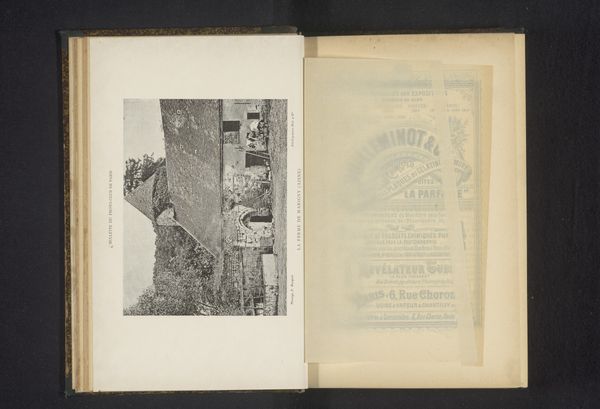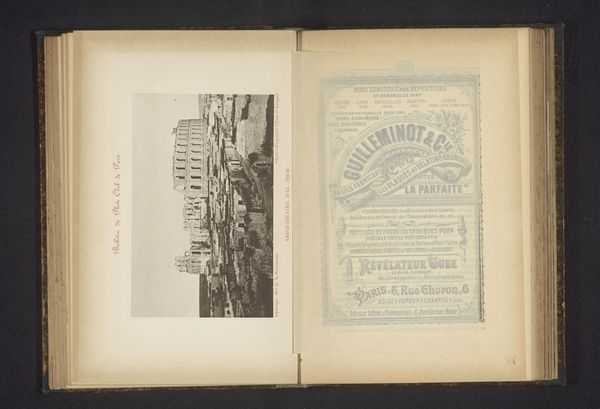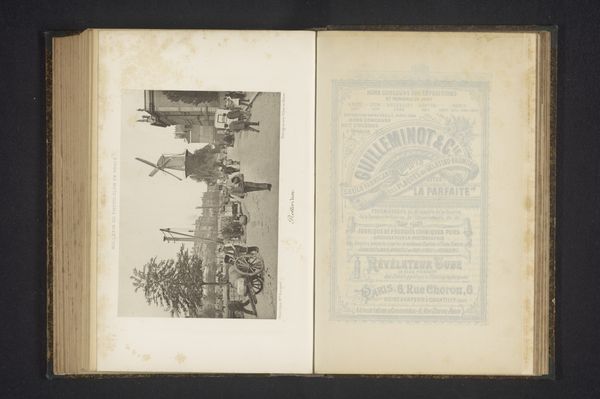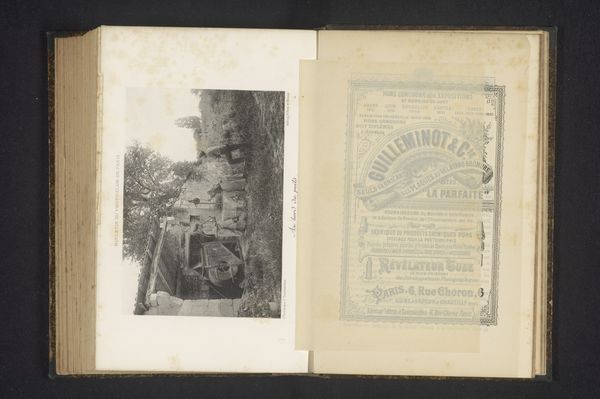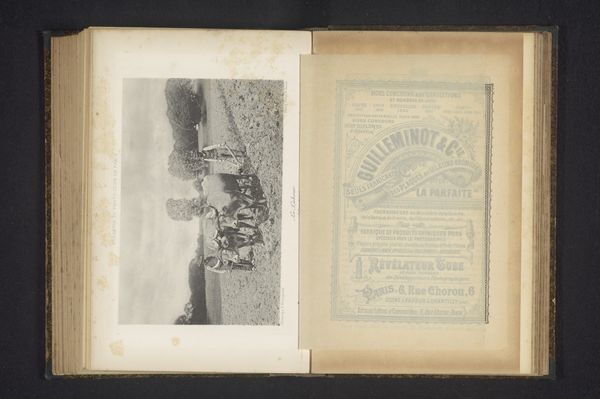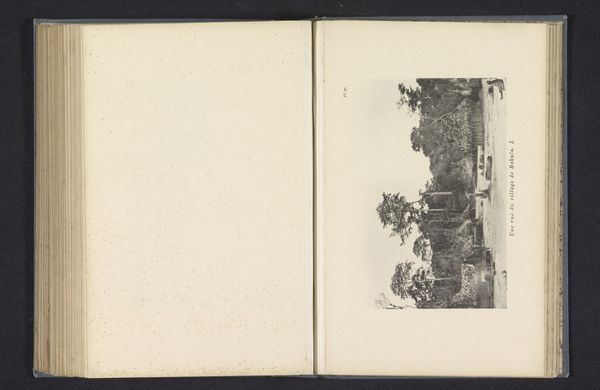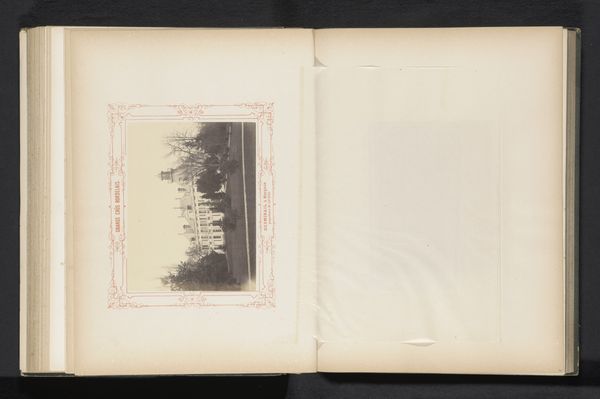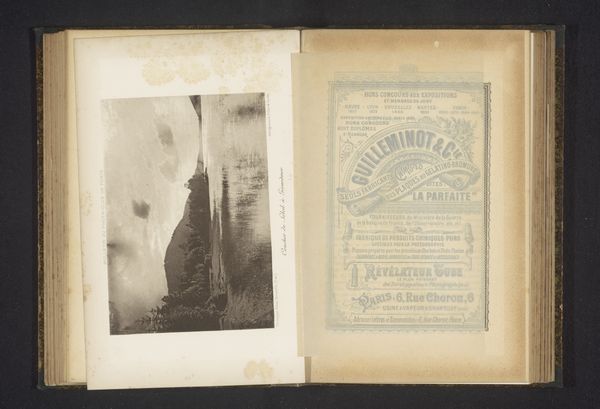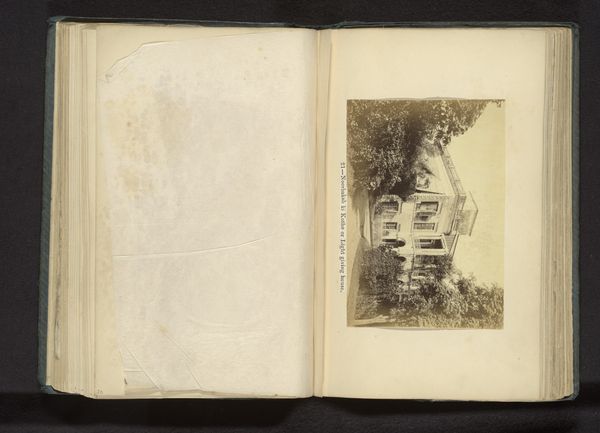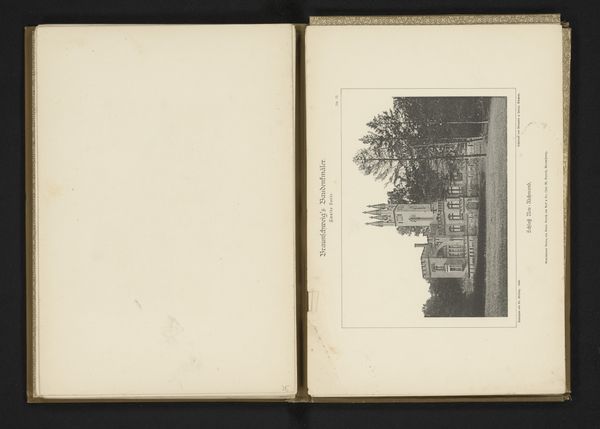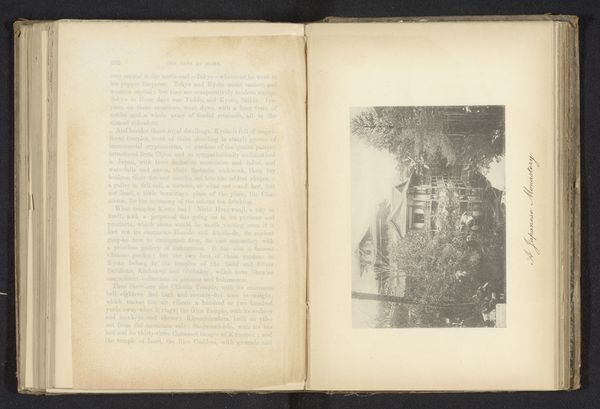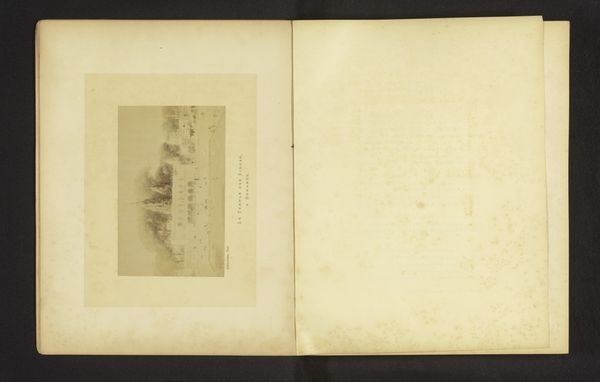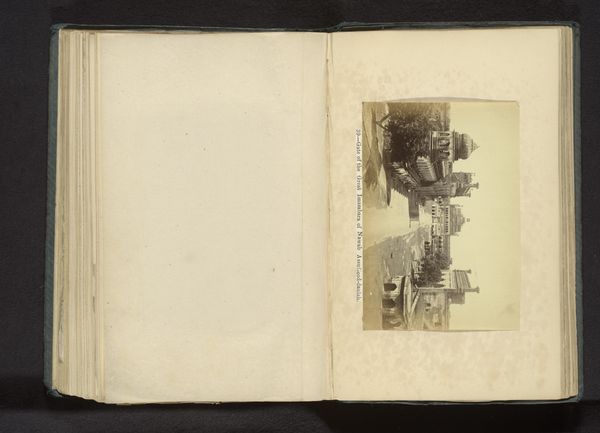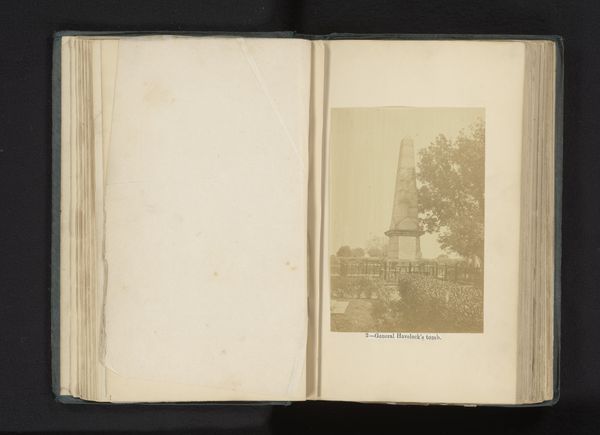
#
aged paper
#
toned paper
#
homemade paper
#
ink paper printed
#
river
#
paper texture
#
fading type
#
thick font
#
watercolour bleed
#
watercolor
#
historical font
Dimensions: height 119 mm, width 170 mm
Copyright: Rijks Museum: Open Domain
Editor: This is "Gezicht op de rivier de Vézère in Uzerche, Frankrijk" by Paul Bourgeois, dating from before 1895. It's a printed work on aged paper, and it has this incredibly nostalgic feel. Looking at it now, I’m curious about the context it was created in. What do you see in this piece from a historical perspective? Curator: Well, immediately I’m struck by how this image fits into the broader historical context of travel and tourism. Before the age of mass photography, images like this one played a key role in shaping perceptions of faraway places. Notice how the composition emphasizes the picturesque qualities of the town – the way the buildings cluster together, the reflection in the river. Editor: It's like a postcard. Was Bourgeois intending for it to be that accessible, a view for general consumption? Curator: That's a great question! Yes, definitely. The commercial context of this image is critical. It's designed to be reproduced and distributed widely. But what interests me further is how it simultaneously captures the unique identity of Uzerche, while catering to a generic, bourgeois taste for scenery. The framing on the left-side suggests a natural look at first glance, then the eye is forced up towards the village which implies the industrial nature of the time through visual composition. Editor: That's fascinating – the tension between the unique and the generic, and how art facilitates shaping culture, which is pretty intense! I’ve never thought of landscapes having any agenda beyond documenting beauty, but how the choice of view or specific scene is inherently promoting an ideal! Curator: Exactly. And consider how museums and galleries today reinforce or challenge these earlier narratives through their choices of which images to display. Everything’s interconnected! Editor: It does make you question whose view we're really seeing and how art can push certain ideas. Thanks so much! It's definitely a point of view I had not considered before and provides an important new context.
Comments
No comments
Be the first to comment and join the conversation on the ultimate creative platform.
